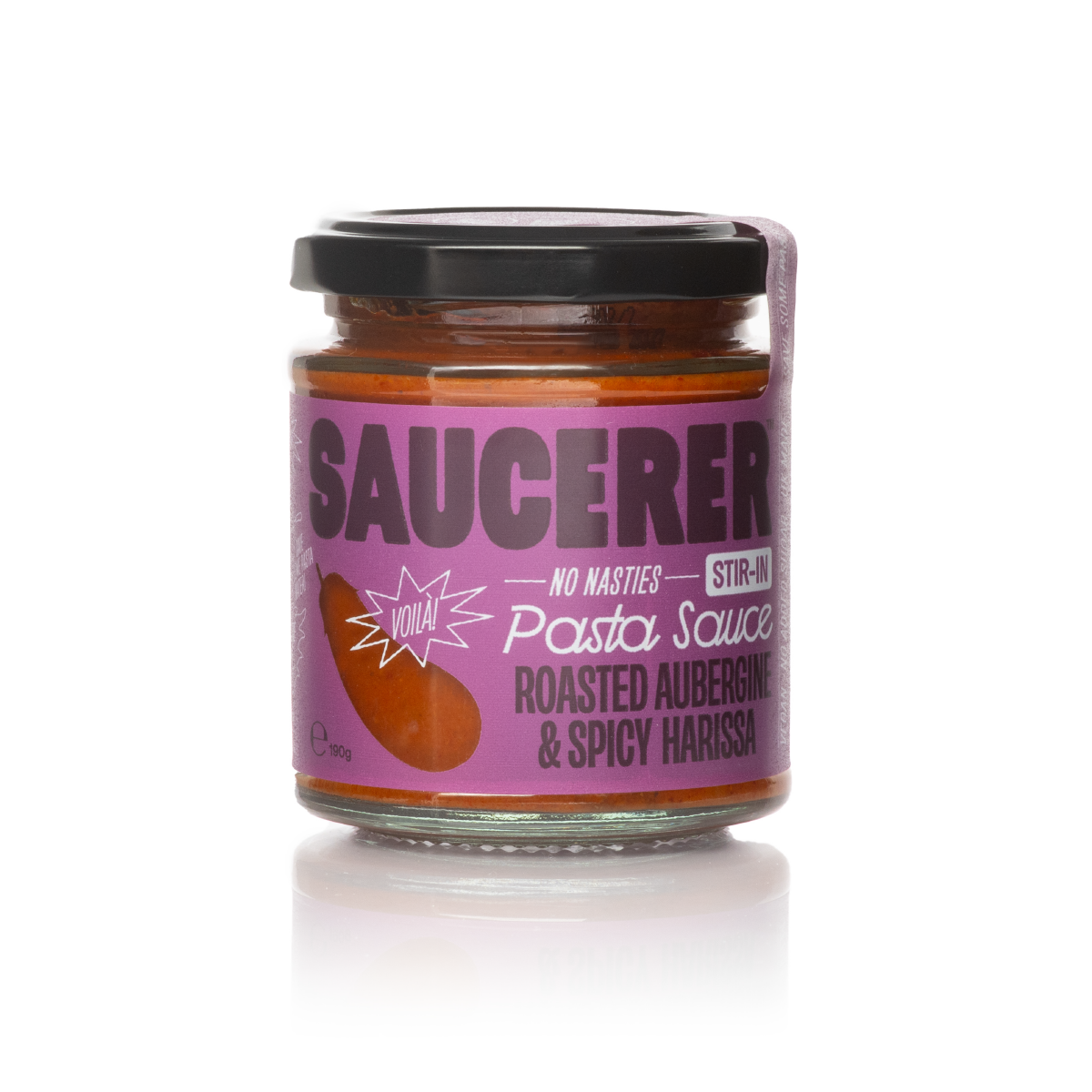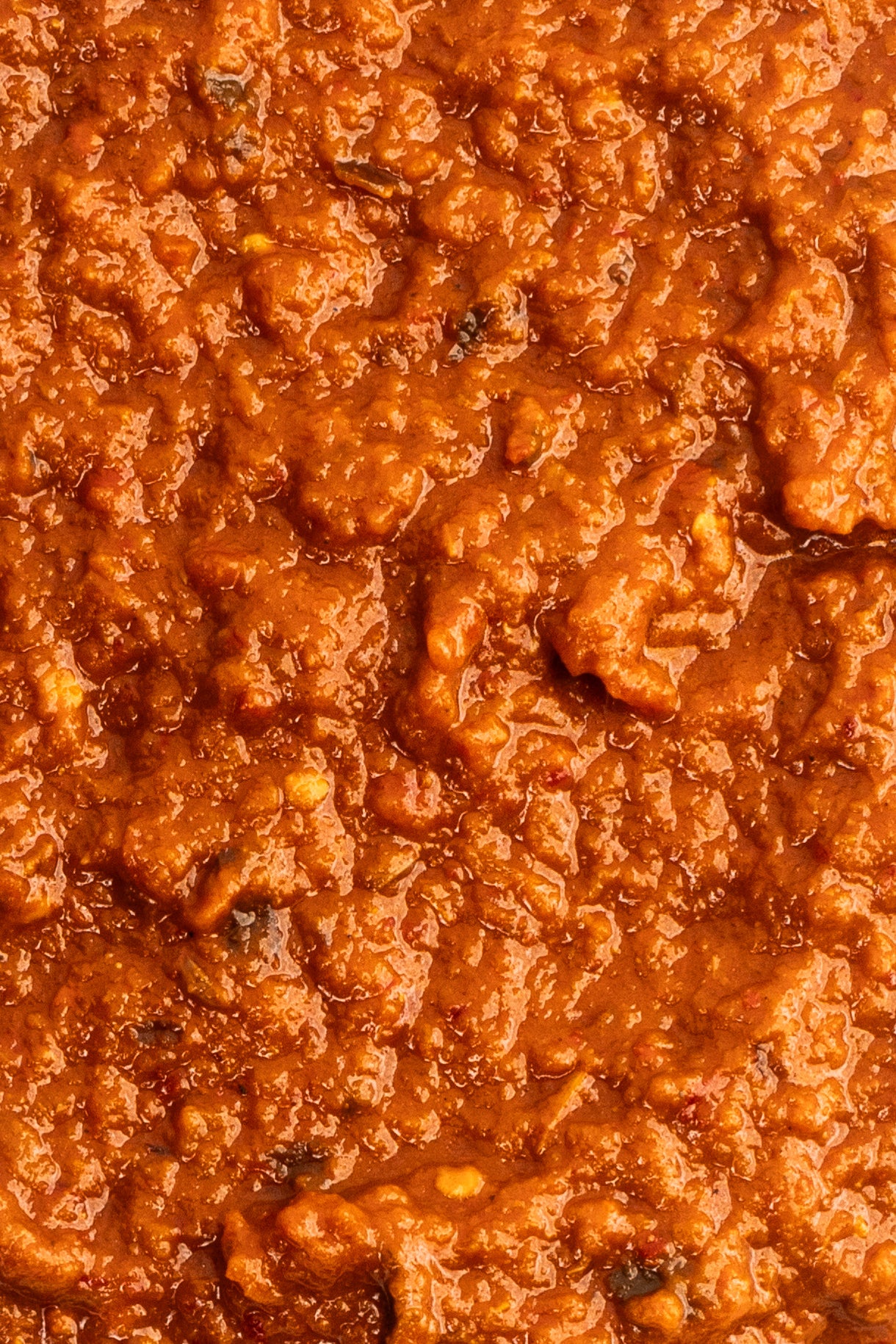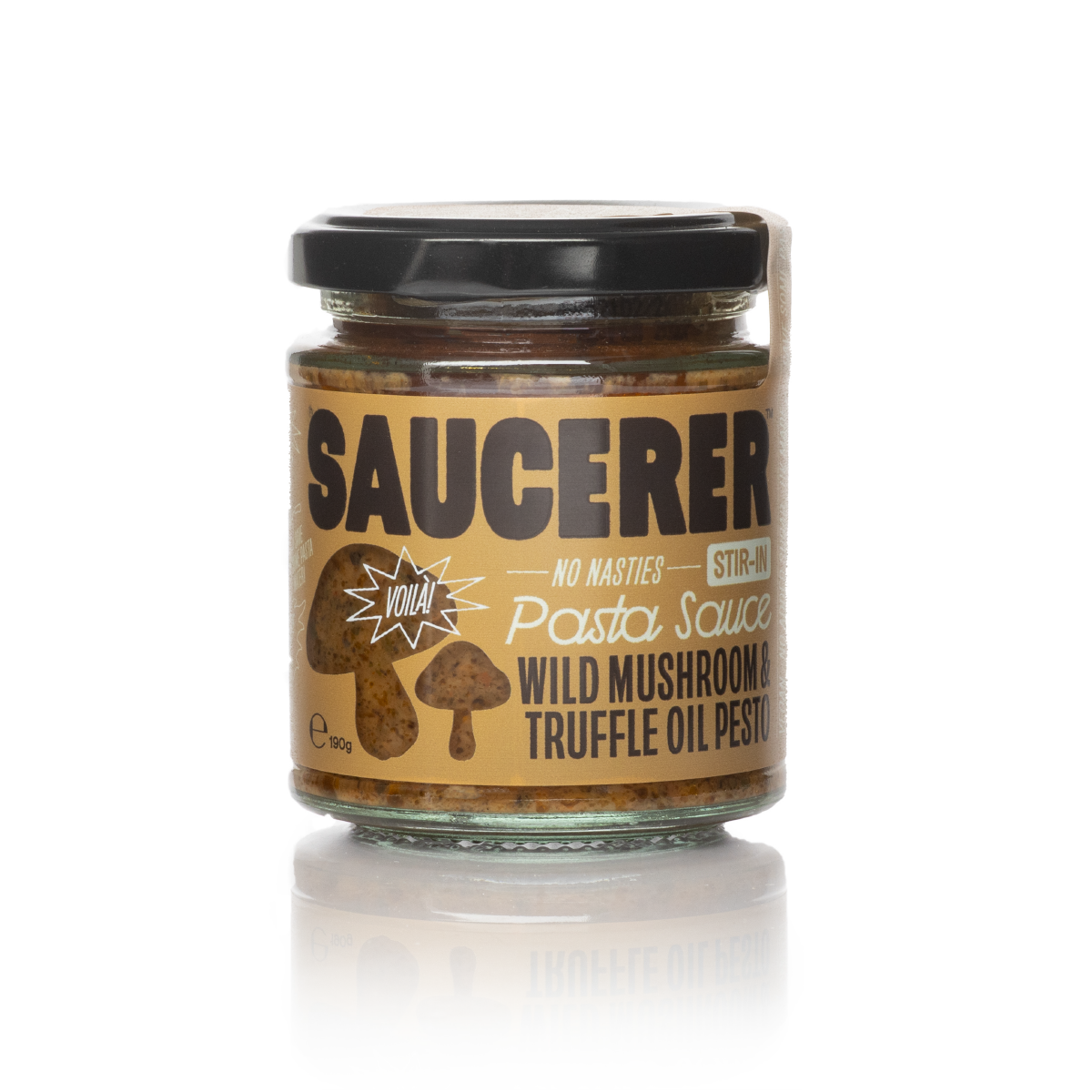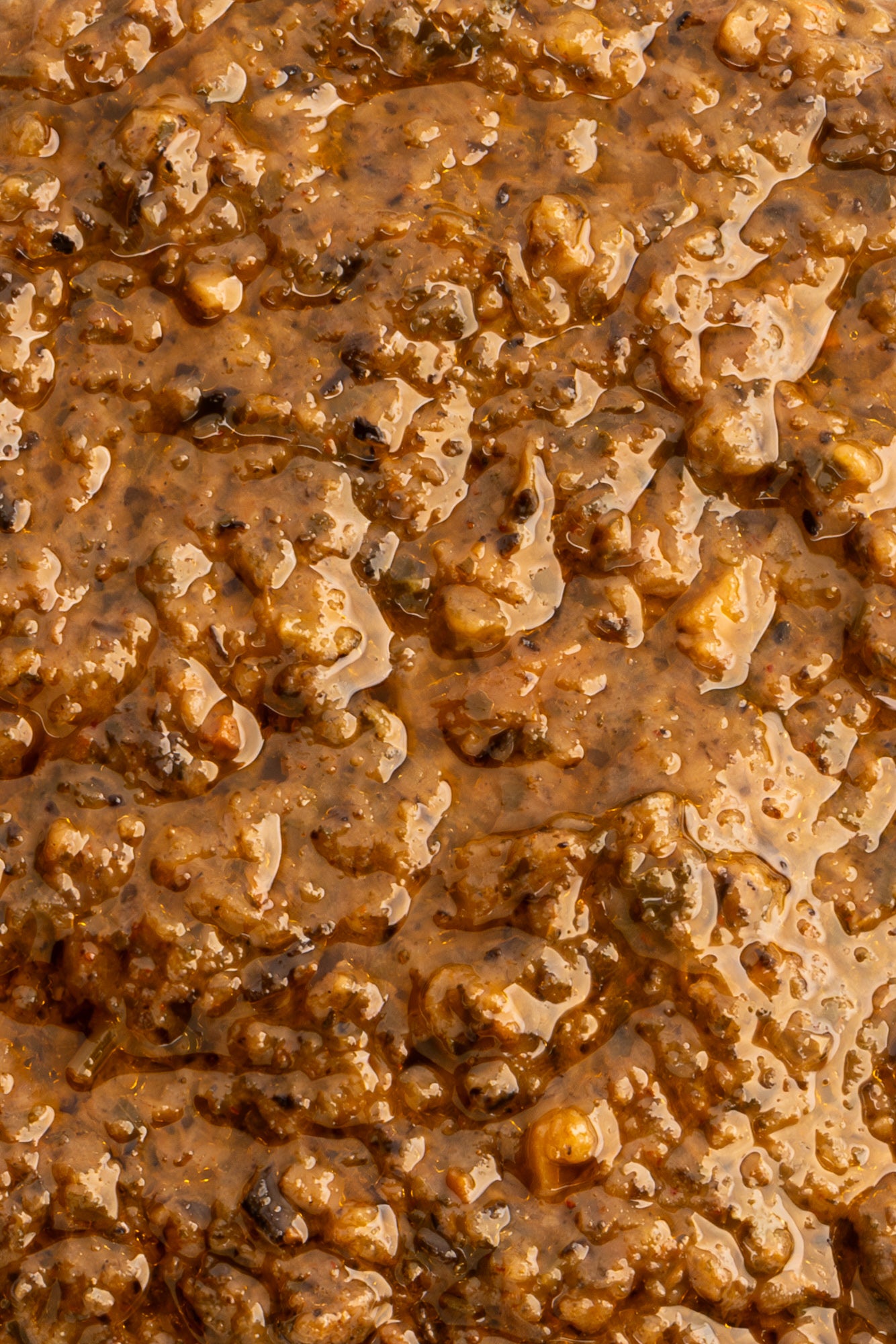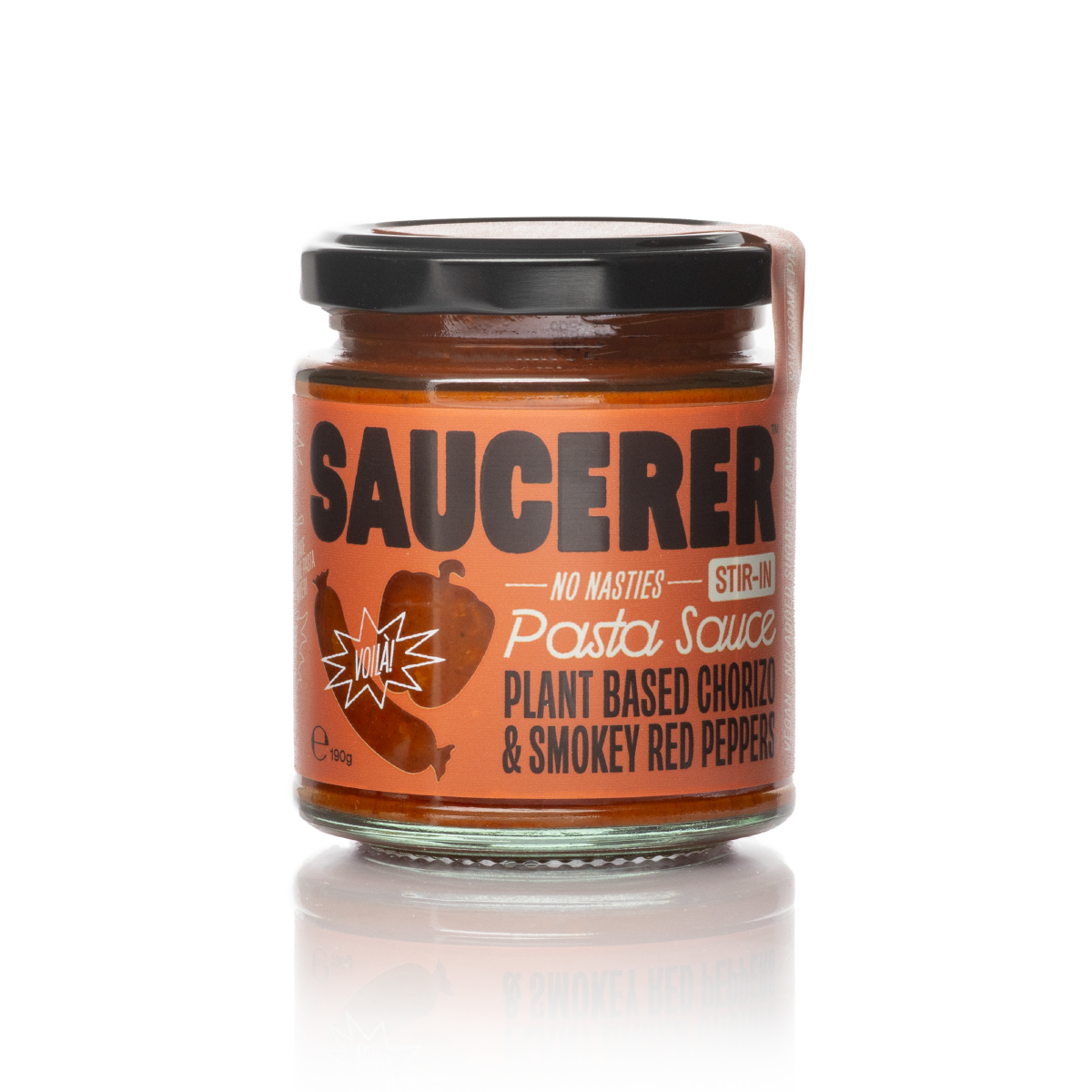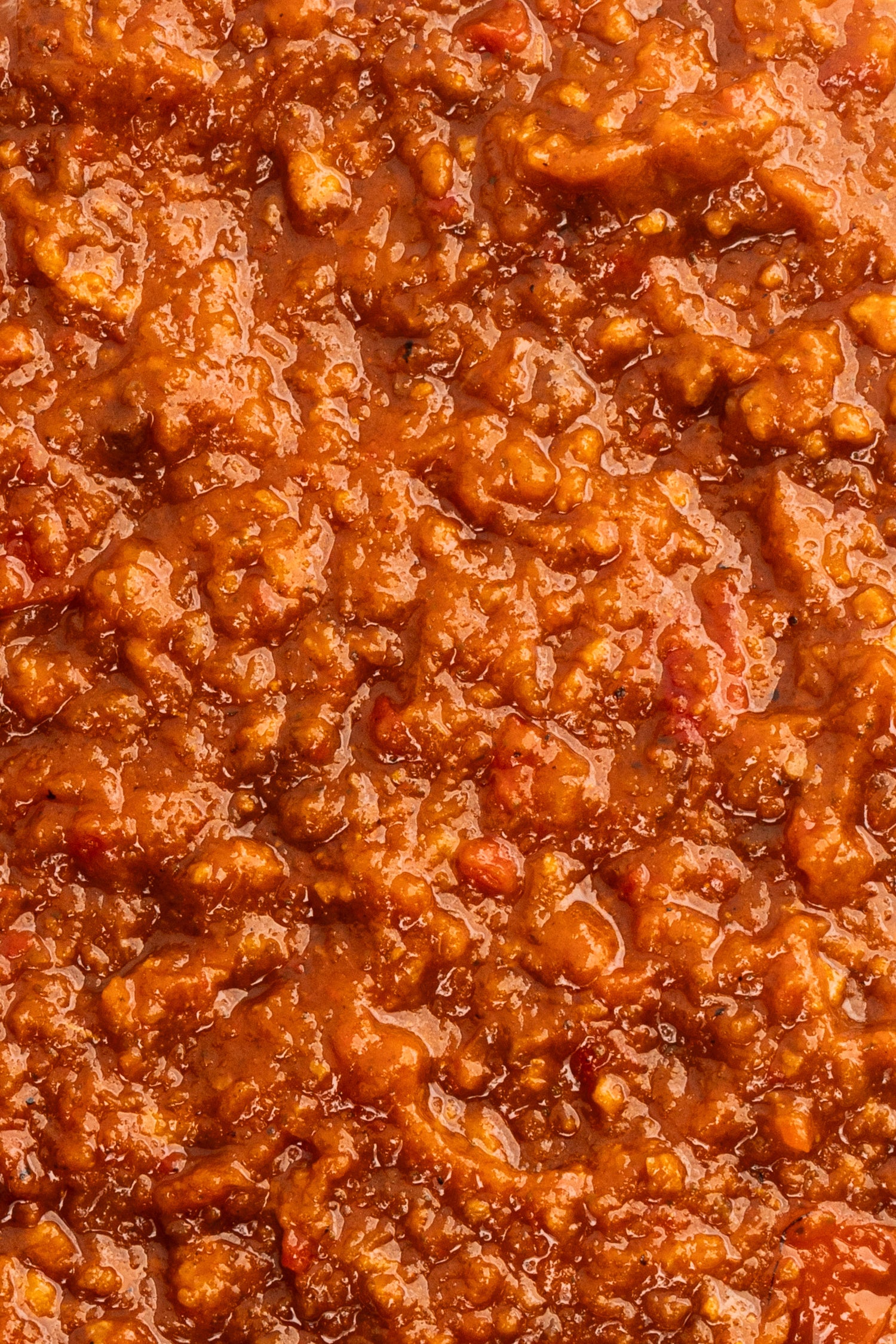The Gourmet World of Truffle: White Truffle and Black Truffle
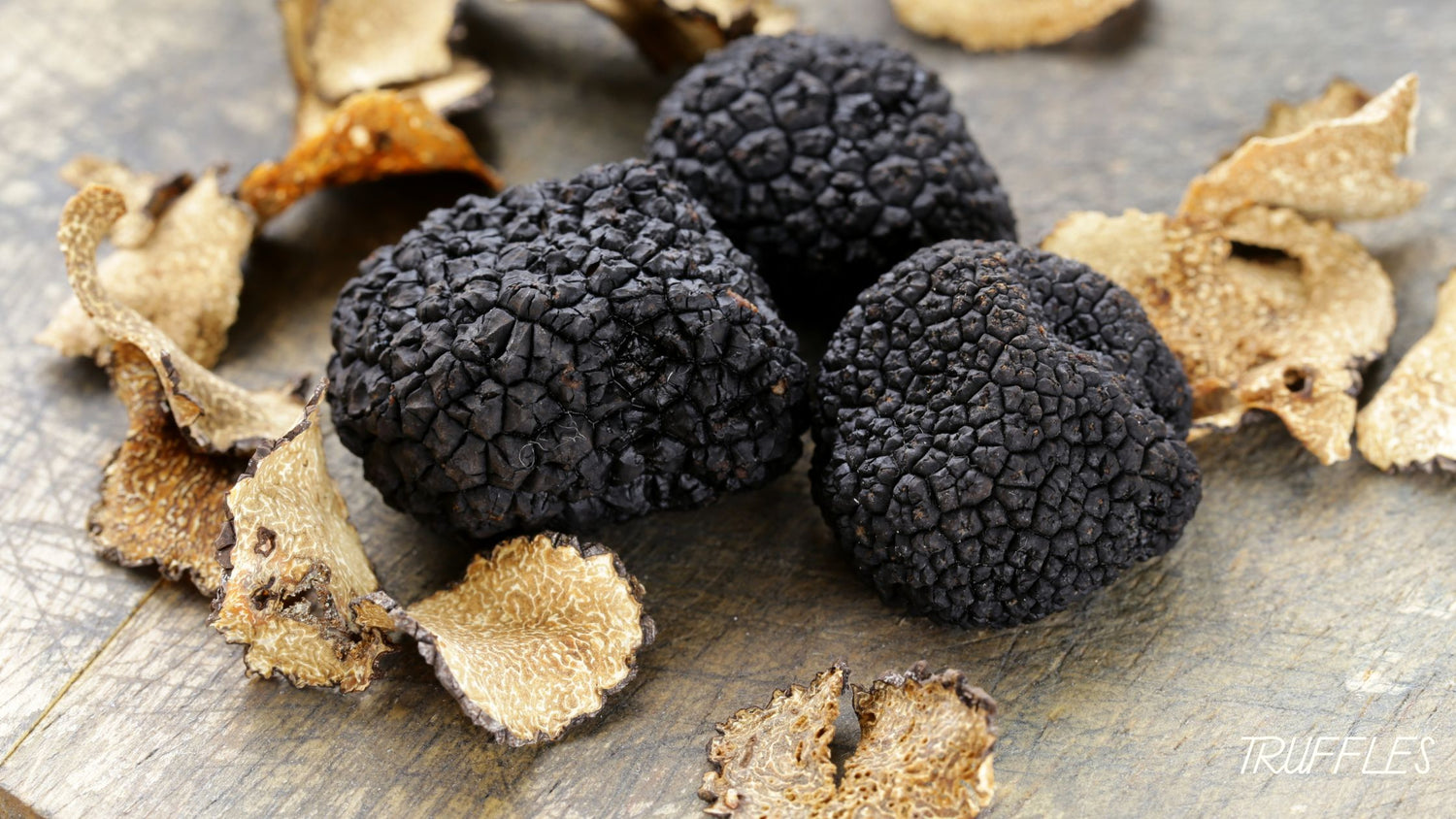
White truffle or black truffle it really doesn’t matter, in the world of gourmet delicacies, few ingredients evoke the same level of culinary admiration and intrigue as the elusive truffle. Renowned for its intoxicating aroma and delicate flavour, the truffle stands as a symbol of gastronomic excellence and luxury. Truffle comes in two different forms; white truffle and black truffle, both are on another level of indulgence.
Here at THE SAUCERER HQ we wanted to take you on a journey into the enchanting world of both white truffle and black truffle. After all being the purveyor of fine gourmet stir-in pasta sauces we have a wealth of knowledge to share. Delve into the depths of flavour and discover the exquisite Wild Mushroom and Truffle Pesto sauce we have in our range, a delectable creation that combines the earthy richness of mushrooms with the unparalleled allure of truffles.

Mushrooms, with their earthy flavours and diverse textures, have captivated the culinary world for centuries. From the prized white truffle to the humble chanterelle, these fungi offer a wealth of flavours and culinary possibilities. In recent years, there has been a surge in interest among enthusiasts foraging for their own mushrooms, eager to explore the bounties of nature and uncover hidden treasures.
Beyond their culinary delights, mushrooms have played a significant role in traditional medicine and cultural practices throughout history.
Ancient Beginnings: The use of mushrooms for medicinal purposes dates back thousands of years to ancient civilizations around the world. In ancient China, mushrooms were revered as symbols of longevity and immortality, with varieties such as reishi and shiitake prized for their purported health benefits. Traditional Chinese medicine (TCM) utilized mushrooms to treat various ailments, including boosting immunity, promoting longevity, and supporting overall well-being.
Similarly, ancient Egyptian, Greek, and Roman cultures also valued mushrooms for their medicinal properties. Mushrooms were believed to possess healing powers and were used to treat a range of conditions, from infections and digestive disorders to neurological ailments and respiratory issues.
Medicinal Mushrooms in Traditional Cultures: Throughout history, indigenous cultures across the globe have incorporated mushrooms into their traditional healing practices. In Central and South America, indigenous tribes such as the Aztecs and Mayans revered mushrooms as sacred and used species like psilocybin mushrooms in spiritual ceremonies and shamanic rituals.
In traditional Ayurvedic medicine in India, mushrooms were valued for their therapeutic properties and were used to support vitality, balance body systems, and enhance overall health. Varieties such as the medicinal mushroom cordyceps were prized for their adaptogenic properties and ability to improve energy levels and endurance.
Medicinal Mushrooms in Modern Medicine: While mushrooms have been used medicinally for centuries, their therapeutic potential continues to be explored and studied in modern scientific research. In recent decades, there has been growing interest in the pharmacological properties of medicinal mushrooms, particularly in the fields of oncology, immunology, and neurology. Read this article for more information on mushrooms medicinal past >
Several species of mushrooms, including reishi, turkey tail, and maitake, have been the focus of scientific studies for their potential anti-cancer properties, immune-modulating effects, and antioxidant activity. Compounds found in these mushrooms, such as beta-glucans, polysaccharides, and triterpenoids, have shown promise in supporting immune function, reducing inflammation, and combating oxidative stress.
In addition to their potential anti-cancer and immune-boosting properties, medicinal mushrooms have also been studied for their role in supporting cognitive health and mental well-being. Compounds found in certain mushrooms, such as lion's mane and cordyceps, have been shown to enhance cognitive function, promote neurogenesis, and support overall brain health. Check out this article for further information health benefits of eating mushrooms >
Unveiling THE SAUCERER's Wild Mushroom and Truffle Pesto Sauce:
At THE SAUCERER, passion for quality ingredients and culinary innovation drives every creation. One such masterpiece is our Wild Mushroom and Truffle Pesto sauce, a harmonious blend of hand-selected mushrooms and aromatic truffles. Crafted with a medley of chanterelle, shiitake, chestnut, porcini, and trumpet mushrooms, this sauce offers a symphony of flavours and textures that elevate any pasta dish to new heights of gastronomic delight. White truffle or black truffle we love them both – we are just a bit crazy for all things mushrooms. Read more about at story behind Saucerer >

Where to Find Mushrooms:
Mushrooms can be found in a variety of habitats, from damp forests and woodlands to grassy meadows and even urban parks. Each species has its own preferred environment, so it's essential to know where to look for specific types of mushrooms:
Chanterelle Mushrooms:
Chanterelles thrive in deciduous and coniferous forests, often growing near oak, beech, and pine trees. Look for these golden-hued beauties in mossy areas or beneath leaf litter during the late summer and early autumn months.
Porcini Mushrooms:
Porcini mushrooms favour mixed woodlands and forested areas, particularly those with oak, chestnut, and birch trees. Keep an eye out for these meaty mushrooms from late summer to autumn, often hidden beneath fallen leaves or nestled among tree roots.
Trumpet Mushrooms:
Trumpet mushrooms, also known as king oyster mushrooms, are typically found in wooded areas with hardwood trees such as oak, maple, and beech. Look for their distinctive trumpet-shaped caps emerging from the forest floor, especially after rainfall.

Shiitake Mushrooms:
Shiitake mushrooms are cultivated worldwide but can also be found growing on dead or decaying hardwood logs in forests. Keep an eye out for these flavourful fungi in wooded areas with oak, chestnut, or beech trees, particularly during warmer months.
Chestnut Mushrooms:
Chestnut mushrooms, with their mild, nutty flavour, often grow in clusters on decaying wood, particularly hardwood logs and stumps. Look for them in forests, woodland edges, and shaded areas, especially during the autumn months.
Black Truffle Mushrooms:
Black truffles are prized treasures found beneath the soil in truffle-rich regions such as France, Italy, and Spain. Truffle hunters and trained dogs or pigs often search for these elusive fungi in oak and hazelnut orchards, where they form symbiotic relationships with tree roots.
Foraging Tips and Safety Precautions:
-Always positively identify mushrooms before consuming them, as some species can be toxic or deadly if ingested.
-Consult field guides, mushroom identification apps, or experienced foragers to learn about edible and poisonous mushroom species.
-Be mindful of environmental regulations and foraging restrictions in your area, as some locations may prohibit mushroom harvesting.
-Harvest mushrooms responsibly and sustainably, taking only what you need and leaving the rest to ensure future growth and biodiversity.
-When in doubt, err on the side of caution and avoid consuming wild mushrooms unless you are confident in your identification skills.
Benefits of Mushrooms in Gourmet Cuisine:
Mushrooms, revered for their versatility and nutritional benefits, play a starring role in THE SAUCERER's Wild Mushroom and Truffle Pesto sauce. Beyond their exquisite taste and meaty texture, mushrooms offer a plethora of health benefits to people who eat them. Rich in essential nutrients such as vitamins, minerals, and antioxidants, mushrooms contribute to overall well-being and vitality. Chanterelle mushrooms boast anti-inflammatory properties, shiitake mushrooms are renowned for their immune-boosting effects, chestnut mushrooms provide a good source of B vitamins, porcini mushrooms offer a savoury umami flavour, and trumpet mushrooms add a delicate sweetness to the sauce. We use black truffle in our sauce, but are also huge fans of white truffle. Together, these mushrooms create a symphony of flavours that tantalise the taste buds and nourish the body. Here's more information of mushrooms in cooking >

Distinguishing Black Truffle from White Truffle:
Central to the allure of THE SAUCERER's Wild Mushroom and Truffle Pesto sauce are the prized truffles that impart their distinctive aroma and flavour. While both black and white truffle are esteemed delicacies, they possess unique characteristics that set them apart.
Black Truffle:
Black truffles, scientifically known as Tuber melanosporum or Périgord truffles, are esteemed for their robust flavour and aroma. Found predominantly in regions such as France's Périgord and Spain's Soria, black truffle boasts a complex flavour profile characterised by notes of earthiness, nuttiness, and hints of chocolate. Unlike their white counterparts, black truffles exhibit a firmer texture and are often used in cooked dishes to enhance their depth of flavour. Therefore you can see why black truffle is often chosen over white truffle, and why black truffle was the chosen one for THE SAUCERER’s Wild Mushroom and Truffle Pesto. Here's more information on the Black Truffle>
White Truffle:
Known scientifically as Tuber magnatum, white truffles are revered for their pungent aroma and intense flavour profile. Found primarily in the regions of Piedmont, Italy, and Alba, white truffle is prized for their rarity and seasonality. Their distinctively earthy and garlicky aroma, coupled with notes of musk and honey, make them a coveted ingredient in gourmet cuisine. White truffle is typically shaved thinly over dishes to preserve their delicate flavour and aroma. Therefore if you have any white truffle floating around at home (I mean who doesn’t!?) add a shaving or two on top of your SAUCERER dish for an extra truffle explosion. Here is more information on the White Truffle >
The Rise of Mushroom Foraging and the Allure of White Truffles: In recent years, there has been a resurgence of interest in mushroom foraging, fuelled by a desire to reconnect with nature, embrace sustainable living practices, and savour the flavours of the wild. Enthusiasts are drawn to the thrill of the hunt, the satisfaction of discovering hidden treasures, and the culinary delights that await them in the forest. From earthy porcini to delicate chanterelles, each mushroom variety offers its own distinct taste and culinary possibilities. Whether you're a seasoned chef or an adventurous home cook, incorporating these best mushrooms into your cooking repertoire will elevate your dishes to new heights of flavor and sophistication. Or let SAUCERER do the hard work for you, check out our Wild Mushroom & Black Truffle Pesto here>
While chanterelles, porcini, trumpets, shiitakes, chestnuts, and black truffles are esteemed for their unique flavours and culinary versatility, it's the elusive white truffle that reigns supreme as the crown jewel of the mushroom kingdom. Renowned for its astronomical price tag, the white truffle holds a special place in the hearts of gastronomes and gourmands worldwide.
Conclusion:
In the world of gourmet cuisines, few ingredients captivate the senses and inspire culinary creativity like truffles. Whether using white truffle as a final touch or black truffle within your cooking, both give the show-stopping and mouth-watering edge to a meal. With THE SAUCERER's Wild Mushroom and Truffle Pesto sauce, discerning food enthusiasts can embark on a gastronomic journey that celebrates the rich flavours of mushrooms and the exquisite allure of truffle. We ask you to savour each mouthful of this delicious sauce, at THE SAUCERER we have bought together culinary artisans to bring the magic of gourmet cuisine to life, one spoonful at a time.
